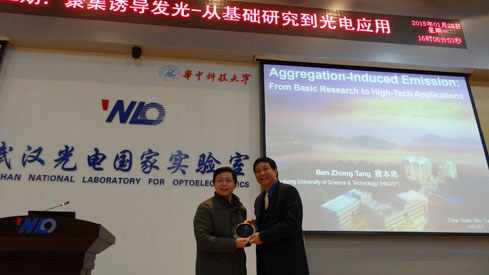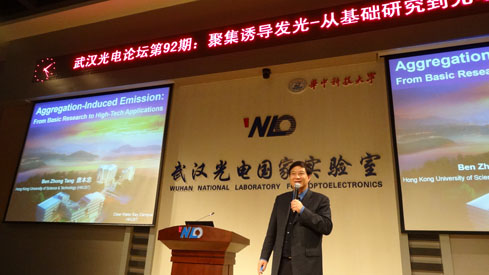WUHAN, China (January 26, 2015) - Wuhan Optoelectronics Forum No. 92 was successfully held in Auditorium A101 at Wuhan National Laboratory for Optoelectronics (WNLO) in the afternoon of January 26.
Aggregation-induced emission (AIE) phenomena have played more and more important role in the development of synthetic polymer chemistry, advanced optoelectronic materials and their applications, since the first report of Prof Tang in 2001. This presentation will introduce the physics basis and design principle of AIE-active molecules, including their classifications, structures, molecular mechanism and applications in fluorescent sensing, bioimaging and OLED etc. Also, Prof Tang will share his understanding on creativity and systematic research, and stimulate young investigators to focus on creative thoughts and the accumulation of scientific researches.
Ben Zhong Tang is a chair professor of chemistry at the Hong Kong University of Science and Technology (HKUST, Kowloon). His research interests include polymer chemistry and materials science. His research group is working on the creation of new molecules and polymers with novel structures and unique properties with implications for high-tech applications.Tang received his B.S. degree from South China University of Technology (Guangzhou) and his Ph.D. from Kyoto University. He conducted postdoctoral research at University of Toronto and worked as a senior scientist in the central laboratory of NEOS Corp. (Shiga, Japan). He joined the Department of Chemistry at HKUST as an assistant professor in July 1994 and was promoted to chair professor in 2008. He was elected to the Chinese Academy of Sciences in 2009.Tang received a Natural Science Award from the Chinese Government and a Senior Research Fellowship Award from the Croucher Foundation in 2007.

